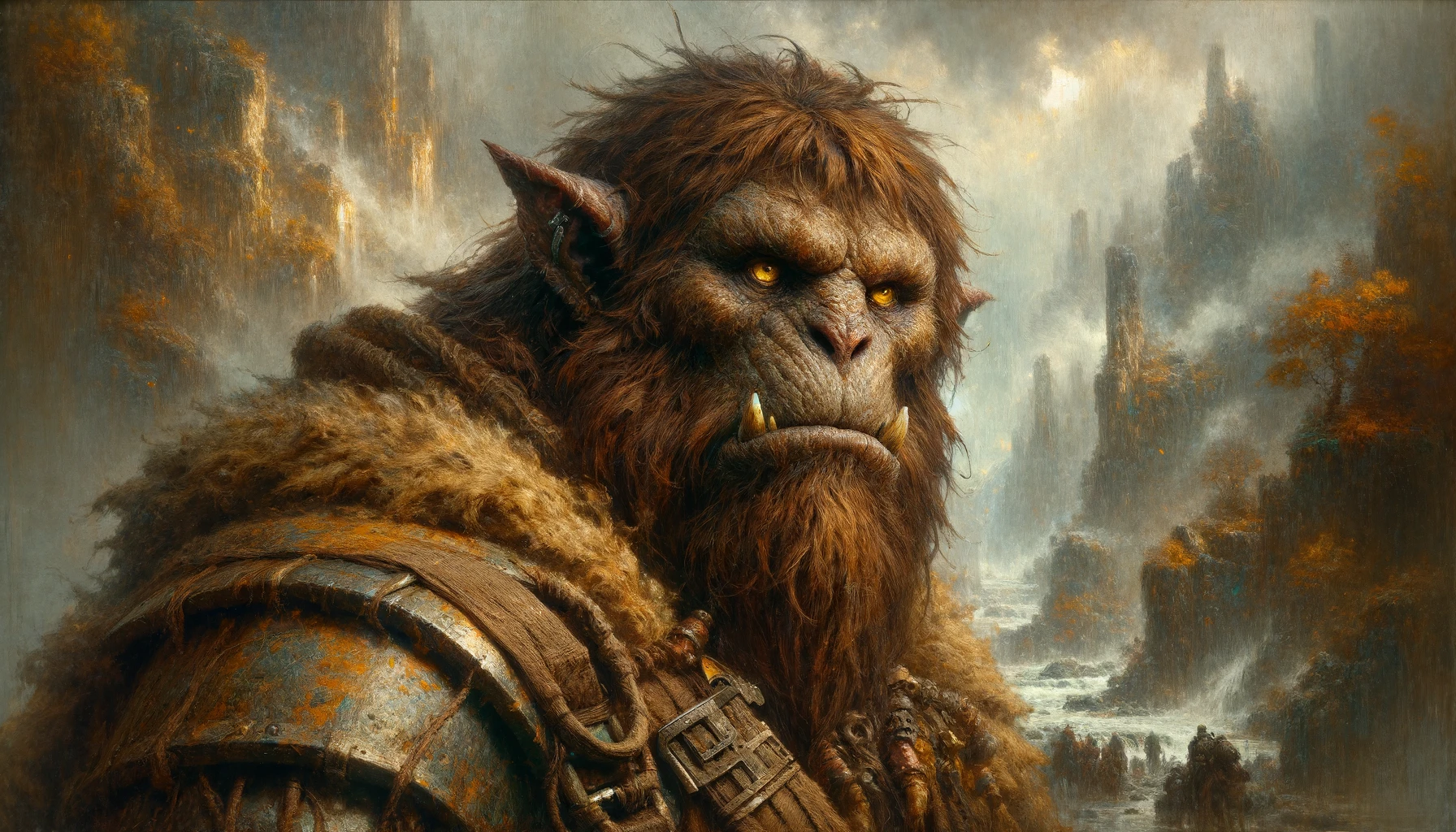In the shadowy realms of dense forests and rugged mountains, Bugbears establish their dominion, far removed from the bustling cities and towns of other races. These formidable beings, with their towering stature and stealthy gait, carve out an existence that is deeply intertwined with the untamed wilderness they call home. Their society, though not as structured as those of more civilized races, is bound by the unspoken laws of survival and the strength of their tribal bonds.
Tribal Society
Bugbear tribes are loose affiliations of families and individuals, each led by the strongest among them, often a chief who has proven their might and cunning. Their leadership is not hereditary but earned through displays of power and the ability to guide the tribe to prosperous hunting grounds and defend them from threats. The social structure within a tribe is fluid, with members vying for favor and position through feats of strength, stealth, and hunting prowess.
Survival and Predation
The core of Bugbear society revolves around the hunt. They are nocturnal predators, using their innate abilities to move unseen and unheard through the forest’s underbrush, ambushing prey with terrifying efficiency. This predatory lifestyle is not merely a means of sustenance but a rite of passage for the Bugbear youth, teaching them the skills necessary to thrive in their harsh environment.
Cultural Beliefs and Practices
Bugbears hold a deep reverence for the forces of nature, embodying the raw, primal energy of the wilderness in their rituals and beliefs. They worship deities that represent strength, stealth, and the hunt, offering trophies from their hunts in elaborate ceremonies conducted under the cover of night. These ceremonies strengthen their bonds with the natural world and with each other, reinforcing their place within the cycle of predator and prey.
Interaction with Other Races
Bugbears are naturally distrustful of other races, viewing them as either threats or potential prey. Their interactions are usually motivated by necessity rather than a desire for diplomacy, such as trading with goblinoid kin or raiding human settlements when the hunt proves insufficient. However, Bugbears capable of overcoming their instincts may find a place within the broader world, using their formidable skills as mercenaries or guides through their treacherous homelands.
Bugbear Adventurers
A Bugbear adventurer is often a loner by nature, driven from their tribe by ambition, exile, or the simple desire to explore beyond the confines of their traditional hunting grounds. These individuals apply their skills in tracking, stealth, and combat to navigate the dangers of the world beyond the wilderness, bringing the cunning and brutality of their upbringing to bear against the myriad challenges they face.
Such Bugbears may find themselves aligned with parties of adventurers for mutual benefit, lending their strength and predatory instincts to the group while gaining access to resources and experiences otherwise beyond their reach. Despite their fearsome reputation, those who spend time alongside a Bugbear adventurer may come to recognize the depth of their loyalty and the complexity of their nature—traits that, like their prowess in the hunt, have been honed by a lifetime in the wild.
Age
Bugbears mature quickly, reaching adulthood at the age of 16. They have a lifespan of around 60 years, with many succumbing to the dangers of the wilderness.Alignment
Bugbears inherit a tendency toward chaos from their wild parents and are not strongly inclined toward good. Bugbears raised in the wild and willing to live out their lives apart from society are usually evil.
Size
Bugbears are tall and well-built creatures, standing around 6 to 7 feet tall and weighing between 250 to 300 pounds on average.Your size is medium.
Speed
Your base walking speed is 30 feet.
Your base swimming speed is 15 feet*.
Your base climbing speed is 15 feet*.
* calculated speed.
Languages
You can speak, read, and write: Common, Goblin.
Ability Score Increase
- Strength: +2
- Dexterity: +1
Skill Proficiency
You have the following skills: Stealth.
Race Features
Darkvision
You have superior vision in dark and dim conditions. You can see in dim light within 60 feet of you as if it were bright light, and in darkness as if it were dim light. You can’t discern color in darkness, only shades of gray.
Brutal Surprise
If you surprise a creature and hit it with an attack during the first round of combat, the target takes an extra 7 (2d6) damage from your attack.
Invisible Stalker
You gain proficiency in the Stealth skill.
Lore
The Stream
Credits: Game Squires

